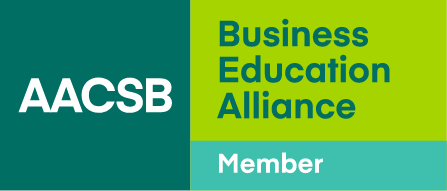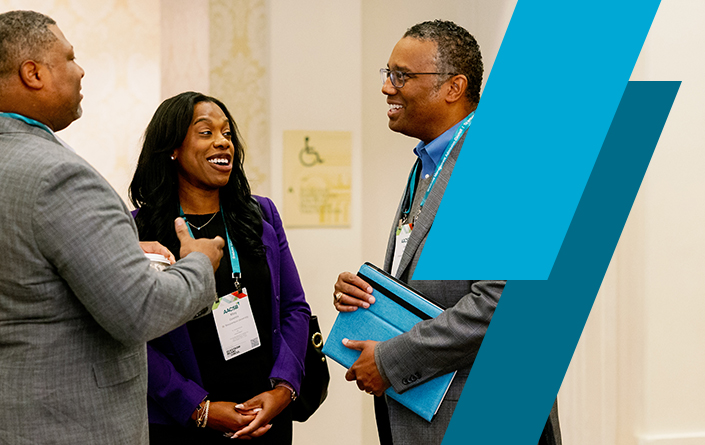Interview with Industry: Imagination, Collaboration Required
How has your passion for education—and your career experiences—influenced your decision to be part of the AACSB Business Practices Council?
Budnik: My passion for education was ignited through my work with the Deloitte Foundation, where I served as president from 2006–2013. I’ve had the opportunity to work with a number of educational institutions to elevate standards and build bridges between educators and the business community. I’ve always thought that the business world and academia have lots to offer each other, and I look for ways to strengthen the collaboration between them.
One highlight of my time at the Deloitte Foundation was the work we did with the American Accounting Association (AAA). We collaborated with the AAA on a variety of topics, from faculty research to curriculum design, and I was looking for ways to scale and extend the reach of those efforts.
It came together when I met Jerry Trapnell from AACSB. At the time, Jerry was working closely with the AAA on changes to AACSB’s accounting accreditation standards. I was excited to learn that AACSB had created a network of business school deans. That network was something unique—and it had enormous potential as a platform for collaboration.
So when AACSB formed a task force to determine if there should be a formal Business Practices Council of the board, I jumped at the opportunity. I’m a now a proud member of the council, and I’m confident our work will be transformative.
What do you hope or envision the Business Practices Council can achieve that will support business school innovation and engagement?
Budnik: Innovation and engagement go hand in hand. I see them as part of a continuous circle: increased engagement speeds the flow of ideas and innovative practices, while business school innovation reveals new and greater opportunities for engagement. The cycling of ideas and the widening of the circle are more important than ever now.
So there are a few areas where the council can focus their efforts, moving forward.
First, expanding AACSB’s business community network would likely be a good place to start. Widen the circle, and benefit from the network effect. Reaching out to even more businesses will likely help bring more ideas, resources, and collaboration opportunities to the schools and will increase the value of the network for everyone involved.
Second, and to help AACSB expand, the council should consider educating the business community on the opportunity they have to support, and help advance the future of, business schools and business education. Business can be a driver of innovation in the schools. Let’s talk about what the business community has to offer—practical experience, ideas and resources— and spell out the value of strong relationships.
Third, the council should consider doing more to specify the skill sets and talent that the business community needs, now and moving forward, and open up a conversation about how to achieve that through curricular offerings as well as through ongoing professional education and new collaboration efforts.
Together the business community and educational institutions can lead change, not just react to it. Education should help set the pace. Business should accelerate it. The more each side can do to develop the other, the better. The council provides a platform to advance that work.
Are there any challenges facing global business today that could be better approached through a partnership with academe?
Budnik: Things are changing rapidly, and meeting today’s challenges is going to take imagination, collaboration, and leadership.
The talent of the future will likely require different skill sets. Technology has rendered some skills obsolete even as it demands new skills and different ideas of what business and business education should look like.
Currently, there’s a significant demand for data scientists. But it goes deeper than that. The data-centric organization of the near future may do everything differently, from product design to talent management. So it’s important to think about how to integrate data mining, analytics, and security into other areas of education—across the business curriculum—and how faculty can be incented to do that.
At the same time, there should be a focus on ensuring that schools are producing creative, entrepreneurial thinkers who can translate data to strategies, stories, and actionable insights.
It’s important to be prepared for a borderless world in which talent has greater global mobility than ever before. Companies are becoming more globally integrated and geographically dispersed, and economic momentum continues to pivot toward Asia. There will likely be an increasing demand for people who can easily adapt to different cultural contexts, teaming, and working across cultural divides.
New ideas about the role business plays in society—spurred on by the sustainability movement and the advance of corporate social responsibility—suggest another area where business and academe can work together: designing purpose-driven organizations. As Deloitte’s most recent annual Millennial Survey shows, the organization that is focused on improving society, and not just products and profits, is now a magnet for top talent.
Finally, doing more, together, to develop the leaders of tomorrow is key. Too often, businesses are trying to bridge the leadership gap on their own. At Deloitte we’ve met this challenge head-on, establishing Deloitte University, our own leadership center. But many organizations do not have the capacity to do that. Organizations could make great advances together and learn from each other in the process.
What are the three most important things institutions must do now in order to remain relevant to industry—both now, and well into the future?
Budnik: One would be to do work that is more relevant to industry. Dialogue is crucial to setting a shared agenda. Then it’s up to institutions to direct research and teaching to critically important areas, and to help business gain insight into emerging trends.
Innovate and be open to innovation. Historical revenue sources are diminished, and there’s a PhD shortage. But new technology driven delivery methods as well as new business models can help institutions succeed in this environment. One key way to accomplish this is to adapt and stay agile.
Encourage faculty to take risks and experiment. Institutions should consider offering incentives and support for faculty who are truly innovative, and who are retooling curricula to meet the real-world needs of business.
What is the one piece of advice you would give graduate students as they pursue business education?
Budnik: Your education is just the start of a journey. The world is changing so rapidly that you should keep learning and developing throughout your career. You’ll probably learn most working with those who are least like you. You are likely to learn more when your workplace is inclusive and to do your best work when your team is built from diverse strengths. You have lots to learn, and something to teach as well.






